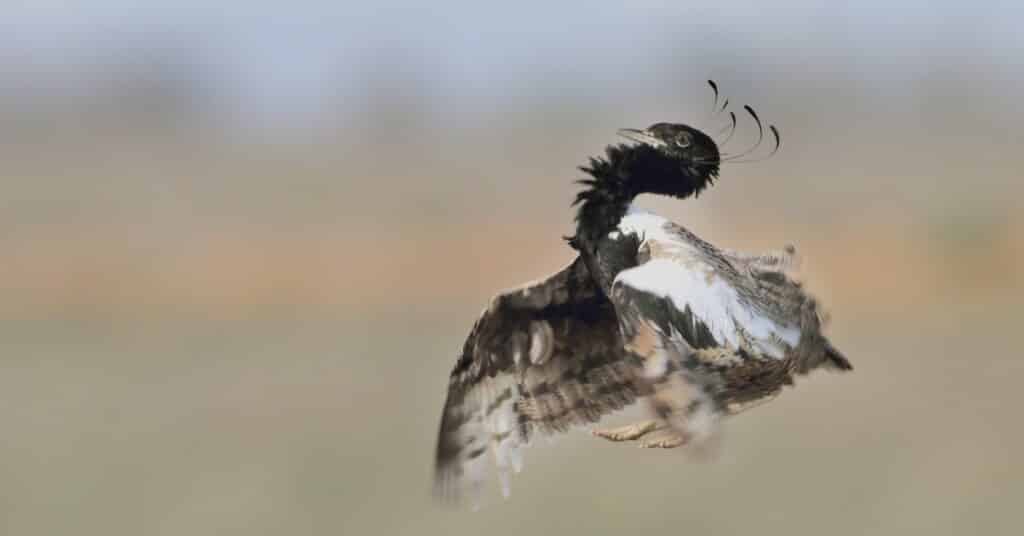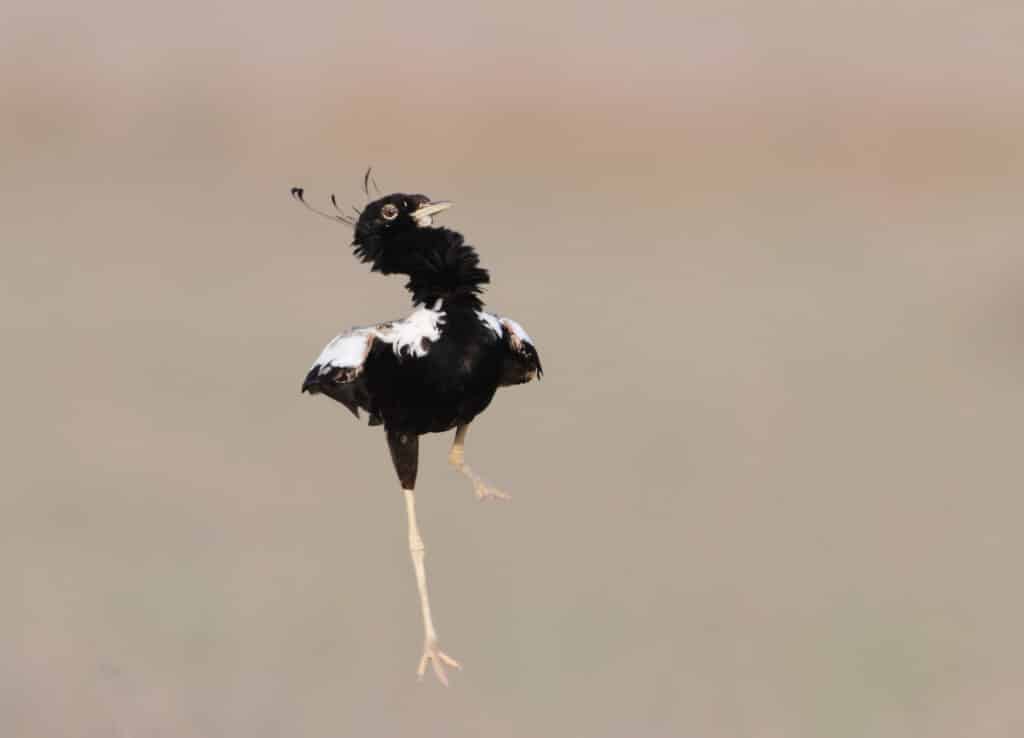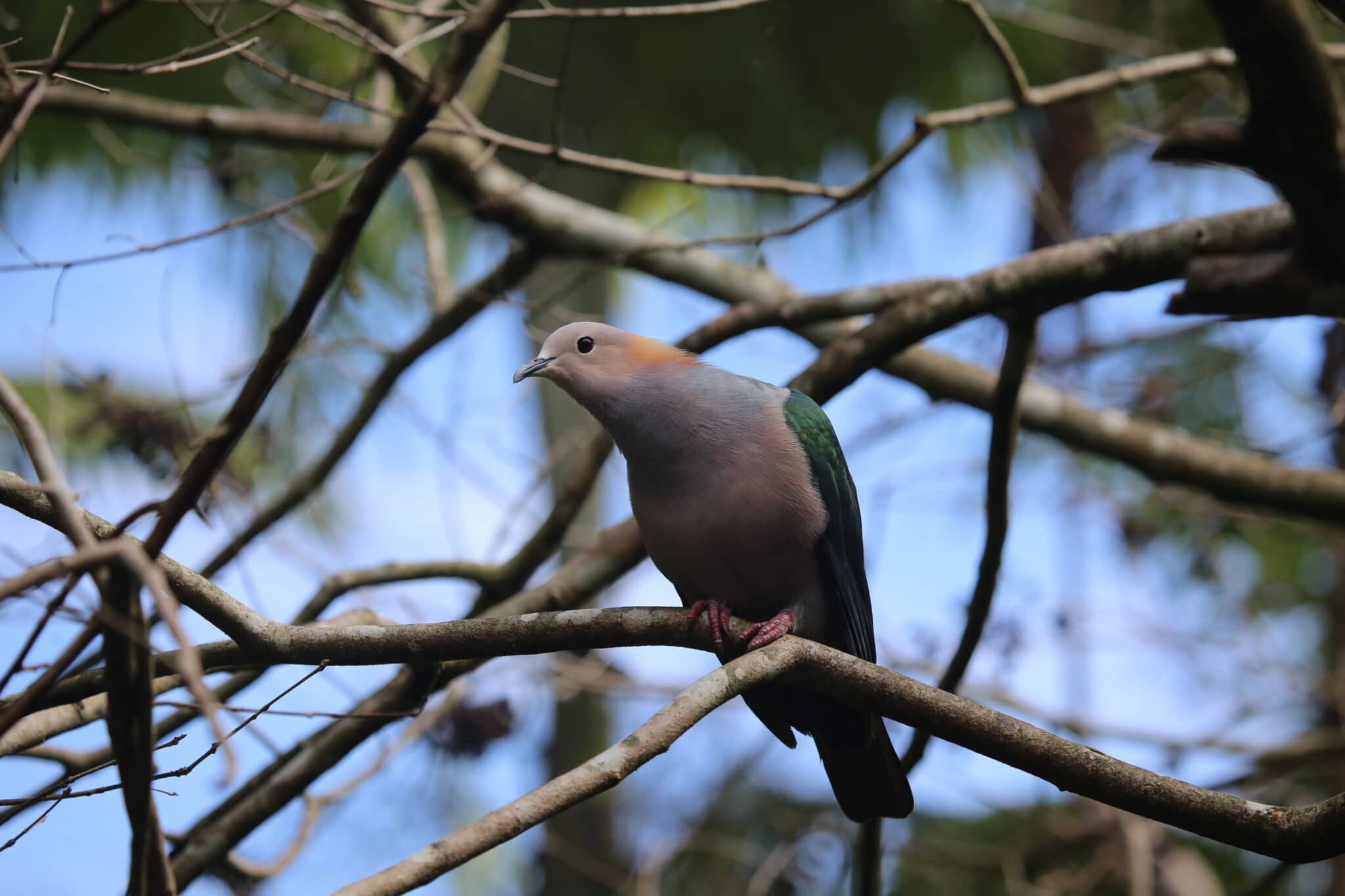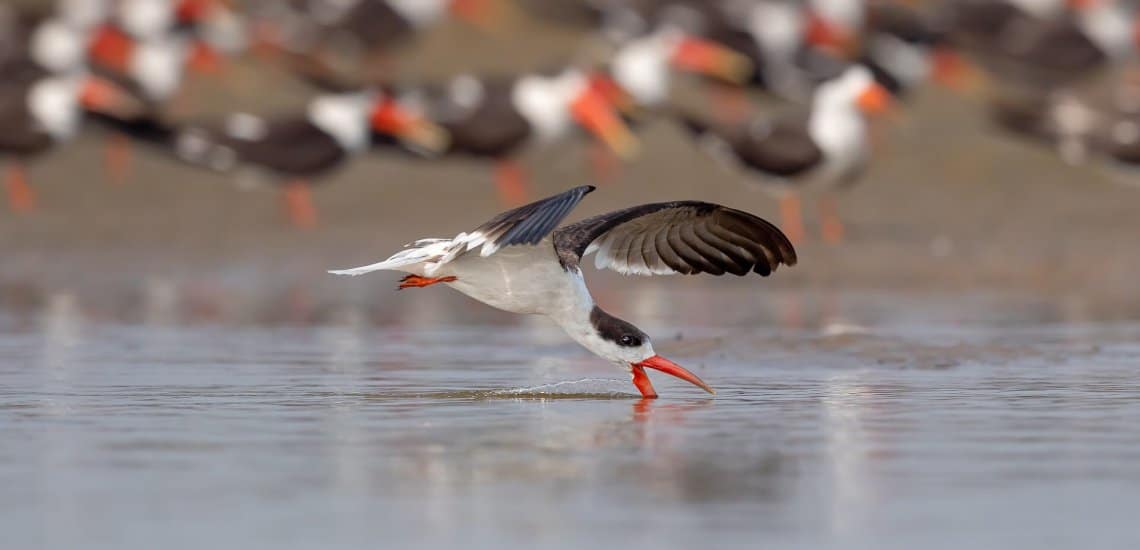One to watch: Lesser Florican

The smallest of the bustard family, Lesser Florican is renowned for its spectacular leaping breeding display. However, widespread loss of its grassland habitat in South Asia have led to rapid declines of this Critically Endangered species.
Header image: Lesser Florican © Gobind Sagar Bhardwaj
Widespread and abundant in the 19th century, Lesser Florican’s decline is inextricably linked to that of the lush lowland grasslands of India. In better times, this small bustard with distinctive twisted moustaches could often be seen leaping above the tall vegetation in an elaborate courtship display. It was initially listed as Critically Endangered in the 1994 Red List, but improved surveys indicated a slower rate of decline, and it was moved to Endangered. This seems to have sent a message that conservation action could be delayed – and because no-one took advantage of this crucial window of opportunity, the species’ decline simply continued unchecked.
In 2021, Lesser Florican was once again reclassified as Critically Endangered, barely able to cling to the final patches of habitat that remain. Vast areas of natural grassland have been converted to agricultural land, and what’s left is being degraded by overgrazing, invasive plants and disrupted rainfall patterns resulting from climate change. These dangers are compounded by the threat of feral dogs, hunting and egg-collecting. Even in flight, the species isn’t safe – researchers suspect that collisions with infrastructure such as roads and powerlines cause significant mortality.
Unlike more ‘fashionable’ habitats such as rainforests and coral reefs, grasslands like these often risk being overlooked – but the BirdLife Partnership is trying to change this. The Bombay Natural History Society (BNHS, BirdLife in India) and other local conservation organisations have been working with farmers in one of the species’ final strongholds, Ajmer in Rajasthan, to raise awareness and incentivise protection of themspecies. The landscape at Ajmer is now taken over by crops, so it is not an optimal habitat. Nevertheless, BNHS’s project has managed to remove invasive Prosopis trees – native to the Americas – in a bid to restore natural ecosystems, and has established a community conservation reserve for organic, low-intensity farming. This should hopefully buy the species valuable time.
“Of all the bird conservation crises in India this is the most urgent and yet the most neglected,” says BirdLife’s Nigel Collar, who also serves as co-chair of the Bustard Specialist Group of the International Union for the Conservation of Nature. “We only have a few years to save this astonishing species, and BNHS needs all the support it can get to expand its valiant efforts.”

You can help protect the Lesser Florican by supporting the work of BNHS here. This article was originally published in the April-June 2022 edition of the BirdLife magazine. Subscribe by becoming a World Bird Club member.


